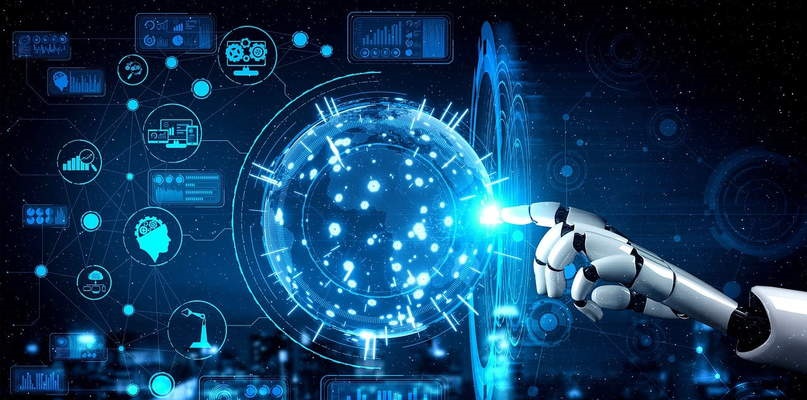Machine learning, a field of artificial intelligence, is revolutionizing the robotics industry by utilizing data-driven algorithms to enable perception and decision-making in complex situations. This powerful technology has opened up new possibilities for robots to enhance various sectors, including self-driving cars, manufacturing, and healthcare. In this article, we will explore the significant impact of machine learning on robotics and discuss its potential for future commercial benefits.
Machine Learning in Self-Driving Cars
Self-driving cars have become an emblematic example of how machine learning algorithms have reshaped an entire industry. These autonomous vehicles rely on sophisticated algorithms to navigate roads, interpret traffic patterns, and make real-time decisions. By analyzing large volumes of data, self-driving cars can adapt to changing environments, ensuring safe and efficient transportation. Real-time data analysis is vital in allowing these vehicles to respond to unexpected situations and prevent accidents.
Machine learning in manufacturing
The manufacturing industry has embraced machine learning, particularly in the area of predictive maintenance. By utilizing machine learning algorithms, manufacturers can proactively detect equipment failures, optimize maintenance schedules, and reduce downtime. This data-driven approach allows companies to maximize productivity by addressing critical issues before they escalate. Predictive maintenance has proven to be a cost-effective solution that enhances operational efficiency and prolongs the lifespan of machinery.
Robotics in Healthcare and Diagnostics
The healthcare and diagnostics industry is another sector experiencing the transformative impact of machine learning in robotics. Robots empowered with artificial intelligence and machine learning are revolutionizing patient care and diagnostic processes. These robots can assist in precise surgical procedures, analyze medical images for tumor identification, offer accurate diagnoses based on symptoms and medical history, and perform maintenance tasks like disinfection and item transportation. With their ability to handle complex tasks with precision and speed, machine learning-powered robots have emerged as invaluable assets in healthcare facilities.
Efficiency in the Healthcare System with Machine Learning-Empowered Robots
Machine learning enables robots to become efficient aides to physicians, dramatically improving the overall efficiency of the healthcare system. By streamlining routine tasks, robots free up medical professionals’ time, allowing them to focus on patient care and complex decision-making. With the assistance of machine learning-enabled robots, healthcare professionals can achieve higher accuracy in diagnoses, optimize treatment plans, and improve patient outcomes. Moreover, efficient resource utilization and reduced administrative burdens contribute to cost savings in healthcare institutions.
Evolution of Machine Learning Algorithms in Robotics
The evolution of machine learning algorithms in robotics has significantly impacted their capabilities and performance. Initially, robots relied on hand-crafted algorithms designed for specific tasks. However, the advent of deep learning has revolutionized robotics by enabling robots to learn from vast amounts of data. Deep learning models, such as neural networks, have exponentially advanced perception and cognition in robots. By simulating the neural networks of the human brain, deep learning empowers robots to understand and interpret complex environments accurately.
Enhancing human-robot interactions through deep learning
Deep learning has played a crucial role in enhancing human-robot interactions, ensuring safe and effective collaboration. Through advanced algorithms, robots can now understand human gestures, facial expressions, and vocal cues, enabling seamless communication. This improved understanding facilitates tasks that require cooperation between humans and robots. Additionally, deep learning models have improved the autonomous decision-making capabilities of robots, allowing them to navigate dynamic environments while ensuring human safety.
Challenges to widespread implementation of machine learning in robotics
While machine learning holds immense potential for various industries, certain challenges hinder widespread implementation. Privacy concerns, ethical considerations, and trust in autonomous machines remain significant obstacles. As robots become more pervasive in our lives, addressing these challenges is crucial to ensure public acceptance and trust. Additionally, the complexity of integrating machine learning algorithms into existing robotic systems requires extensive research, development, and collaboration between different stakeholders.
Future commercial benefits of investing in robotics
Investing in robotics now will lead to substantial commercial benefits in the future. Industries across the board, including transportation, manufacturing, healthcare, and beyond, stand to gain from the continued advancement of robotics and machine learning technologies. Improvements in productivity, efficiency, and accuracy will result in cost savings and increased competitiveness. Furthermore, the widespread adoption of robotics will create new job opportunities, requiring a skilled workforce to design, build, and maintain these advanced robotic systems.
Machine learning’s impact on robotics is transforming industries and revolutionizing the way we interact with technological systems. Self-driving cars, predictive maintenance in manufacturing, robotics in healthcare, and enhanced human-robot interactions demonstrate the immense potential of machine learning in robotics. While challenges exist in ensuring widespread implementation, continued investments and exploration of this technology will lead to future commercial benefits across various sectors. As we navigate the dynamic landscape of robotics, harnessing the power of machine learning paves the way for a future where humans and robots collaborate for the betterment of society.

